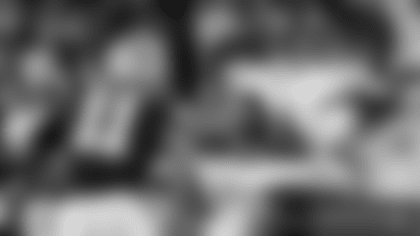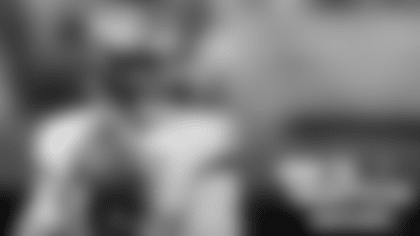The Tampa Bay Buccaneers lost their Wild Card Round game against the Dallas Cowboys on Monday night, 31-14, in a game in which Tom Brady dropped back 68 times and threw 66 passes. That was the second most pass attempts in a postseason game in NFL history, behind only the 68 that Pittsburgh's Ben Roethlisberger heaved against Cleveland during the 2020 playoffs.
Brady finished the game with 351 passing yards, marking the record 19th 300-yard game of his own illustrious postseason career, and also tossed two second-half touchdowns. Unfortunately, the sheer volume that it took to get to those numbers mean it wasn't a particularly efficient evening for the Buccaneers' passing attack.
According to NFL Next Gen Stats, Brady finished the game with a total Expected Points Added (EPA) of -7.3, which ranked ninth among the 12 starting quarterbacks on Super Wild Card Weekend. That figure was better than the -8.5 posted by Jacksonville's Trevor Lawrence in a wild comeback win over the Los Angeles Chargers, but Lawrence's numbers were hurt by four first-half interceptions. Brady's total EPA and EPA per dropback (-0.11) were also better than those of Buffalo's Josh Allen (-13.8 EPA, -0.30 EPA/DB) in a win over Miami.
Brady averaged 2.60 seconds on his Time to Throw (TTT), which measures the elapsed time between the snap and the quarterback's release. That was actually longer than his average for the entire 2022 regular season, when his TTT of 2.45 was the lowest among all quarterbacks with at least 150 dropbacks. However, it was below the league-wide Wild Card Round average of 2.84 and was the third-fastest among the 12 quarterbacks. Cincinnati's Joe Burrow had a TTT of 2.38 in his team's narrow win over the Baltimore Ravens.
The problem for Brady and the Bucs' offense was that the Dallas Cowboys were able to get pressure on him repeatedly and keep a lot of defenders in coverage. According to NGS, Brady was pressure on 19 of his 68 dropbacks, including two plays that ended in sacks. That pressure rate was almost exactly the league average (28.1%) for the weekend, but it was produced without the Cowboys needing to send extra rushers. Brady was blitzed on only 8.8% of his dropbacks, the second-lowest average behind Burrow's 5.6%. In contrast, Miami got pressure on Allen on a whopping 47.8% of his dropbacks (second only to the 48.7% faced by Minnesota's Kirk Cousins against the New York Giants) but had to resort to a weekend-high 52.2% blitz rate to get that done.
In contrast on Monday night, the Buccaneers' defense resorted to blitzes on 32.4% of Dak Prescott's dropbacks but only recorded a 23.5% pressure rate, rushing Prescott on eight of his 34 passing snaps. Prescott responded by completing 75.8% of his passes (25 of 33), which was 9.3% over the expected NGS completion rate of 64.4%. That was the highest Completion Rate Over Expected (CPOE) of any quarterback on Wild Card weekend. Brady's CPOE was -13.7%.
Brady actually finished the weekend with the most dropbacks that produced positive EPA of any of the 12 quarterbacks, with 28. Of course, he also had 21 more attempts than the next player on the list (Miami's Skylar Thompson, 45), so his success rate – percentage of snaps that produced positive EPA – was a league-low 41.2%. Prescott led the bunch with a success rate of 61.8%. The Cowboys' passing offense clearly had a better night than its Buccaneers counterpart, but that had a lot to do with the Dallas defense, which was able to pressure Brady without weakening its coverage.





































